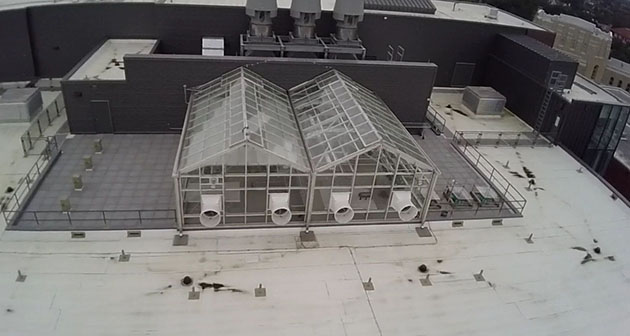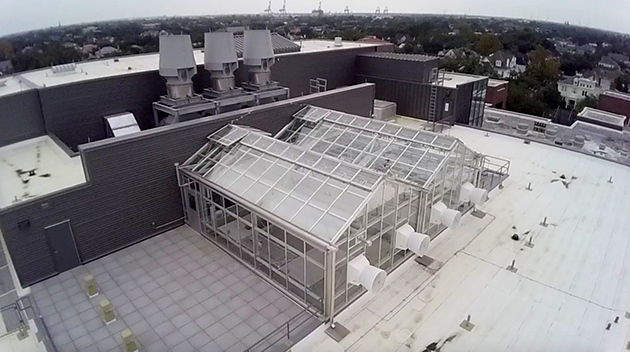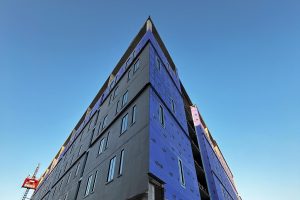Loyola’s greenhouse officially opens
The greenhouse is located on Monroe Hall’s rooftop and is being utilized by Biology and Environmental Studies professors and students. This photo of the greenhouse was taken with the School of Mass Communication’s drone.
November 20, 2014
Next semester, biology and environmental studies students will be reaching new heights with their research — literally.
Thanks to a $250,000 donation from the Azby Fund, a new 3000-square-foot greenhouse facility was built on the roof of Monroe Hall last December.
The Azby Fund Greenhouse facility, which includes two glasshouses, a deck and a head house, where students can pot plants and measure the plants’ environment, will be open to all biology and environmental science students and faculty starting next semester.
Chemistry senior Anne Barkley has already started doing research on the deck of the facility and in the head house with Paul Barnes, the John H. Mullahy, S.J. endowed chair in environmental biology.
Barkley said that current research in the facility is looking at the effects of ultraviolet solar radiation on plant development.
Barkley said she is looking forward to the opportunities that will be available once the greenhouses open.
“They are top-of-the-line greenhouses, a must for any science department engaged in any type of research,” Barkley said. “They will provide myriad undergraduate research opportunities from plant physiology to ecology.”
The facility includes two 23-by-18-foot glass growing rooms, a 500-square-foot research deck, a 900-square-foot storage building and a 650-square-foot head house, according to a university press release. The head house contains two climate-controlled growth chambers.
Barnes, who is one of two professors overseeing the current research, said that the research in the facility will likely expand to examine plant responses to climate change, the genetics of wetland plants, the ecology of native species in Louisiana and productivity in agriculture.
Barnes said that classes will also use the facilities for laboratory studies and to grow plants for in-class demonstrations.
Like Barkley, he said these facilities are necessary for a complete science curriculum.
“There are many aspects of the biology and environment curricula that cannot be studied without adequate facilities to grow and culture plants,” Barkley said.
Barnes said that the greenhouse facility will be useful for a wide range of research, from students studying the fundamentals of biology to faculty doing research in hopes of receiving grants from outside the university.
The Azby Fund’s donation was a part of Loyola’s $100 million Faith in the Future campaign. The fund, which is dedicated to supporting community projects in New Orleans, has donated to Loyola in the past, according to a university announcement.
The fund’s $250,000 gift went toward the improvement of Monroe Hall, with the greenhouse facility adding 114,000 square feet to the building.
Barnes said that anyone outside of the biology and environmental studies department wishing to use the greenhouse will need approval from the Biology Greenhouse Committee.









